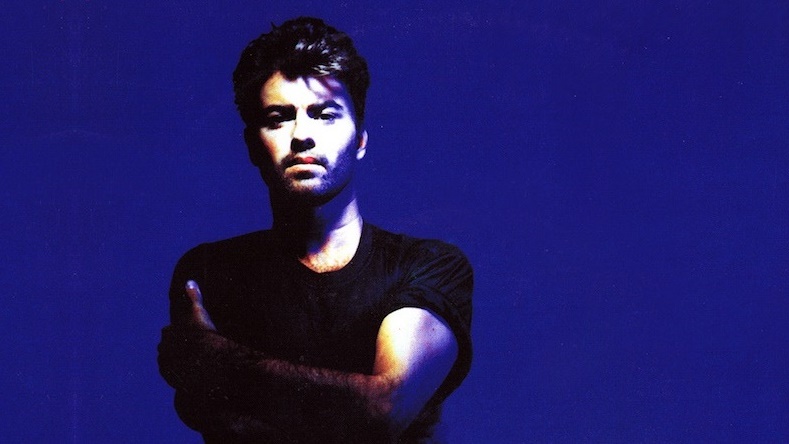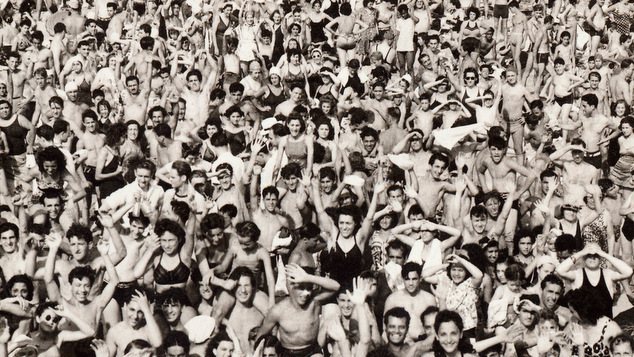
The song that highlighted George Michael’s quest to be taken seriously as an artist, and free of the burdens and shackles of fame, was released as a single 30 years ago today.
Fans first heard Freedom ’90 in September 1990 when the singer released his second solo album Listen Without Prejudice Vol 1, but when it was released as a single, the accompanying video gave fans one of the most iconic music videos of all time, and it was filled with messages and symbolism.
The song served as the second single off the album in Australia and the United States, but it was the third song released from the record in the United Kingdom.
Between his debut release Faith three years earlier, and the arrival of it’s follow up, fans could see something had changed with the teen heartthrob. His new album didn’t have any images of the singer, the first single’s video just had some footage of Michael is the studio, and Freedom ’90 was the only upbeat dance song on the record.
Having emerged on the music scene in 1982 as one half of white boy rap duo Wham! George Michael and bandmate Andrew Ridgely had developed an impressive career, in just four years they’d released three albums, sold millions of records, become one of the first western bands to play in communist China, and they’d topped the charts around the globe.
George Michael’s solo career began long before Wham! went out on a high in 1986. Careless Whisper one of the tunes from the band’s second album had been released as a solo single in some territories in 1984, he followed this up with the ballad A Different Corner in 1986. The following year he teamed up with Aretha Franklin for I Knew You Were Waiting For Me. By the time he released I Want Your Sex in 1987, the first song from his debut solo album Faith, Michael was well established as a solo artist.
His debut solo album was a huge success, seven of it’s nine tracks had been released as singles and the accompanying videos had developed Michael’s image to include his trademark stubble, leather jacket and cross earring. The videos also presented a heterosexual image of the singer in public, while behind the scenes he was privately struggling with his sexuality.

When his second album arrived instead of a picture of the pop star, the cover was an image of a crowded Coney Island beach taken in 1940 by photographer Arthur Fellig, who was professionally known by his pseudonym Weegee.
The video for lead single Praying for Time just featured stock footage, some images of George Michael in the studio, and the lyrics to the song. Decades for lyric clips became de riguer.
Freedom ’90 is based around a drum sample from James Brown’s 1970 track Funky Drummer. In the late 1980’s it was one of the most used samples in music appearing in Public Enemy’s Fight the Power and Bring the Noise, N.W.A’s Fuck the Police, and De La Soul’s The Magic Number, plus it also appeared in tracks by Sinead O’Connor, Eric B. and Rakim, The Beastie Boys, the Fine Young Cannibals, Coldcut, NKOTB, and many others. George Michael even used it in another track on Listen Without Prejudice Vol 1, Waiting for the Day features a slowed down version of the sample.
In the track George Michael sings about his desire to be taken seriously as a songwriter, to take a different path, and break free of the image that’s been created of him. At the time it was obviously Michael was singing about his career, but in retrospect it’s not unreasonable to read into the lyrics that he may have also been singing about his sexuality.
Thirty years after it’s release it is challenging to remember what it was like to talk about sex in the height of the HIV/AIDS crisis. When Australia’s 60 Minutes interviewed Michael in 1988, back when he was boldly declaring that “sex is natural, sex is good, not everybody does it, but everybody should.”, the interview was an interrogation about his sexuality and reporter Jeff McMullen accused Michael of putting youth at risk.
The messages of Freedom ’90 were amplified when the video for the song arrived. Directed by David Fincher, who was an in demand music video director having created memorable videos for Paula Abdul, Billy Idol and Madonna.
The clip featured five supermodels lip-syncing to the track. In January 1990 the cover of British Vogue featured a now now-iconic image of models Naomi Campbell, Linda Evangelista, Tatjana Patitz, Christy Turlington, and Cindy Crawford that was shot by Peter Lindbergh. For the clip Michael asked the five supermodels to take part.
The clip also shows symbols of Michael’s previous clips being destroyed. His iconic leather jacket bursts in to flames, the jukebox from his Faith video explodes into a million pieces, while his guitar is also destroyed.
A club remix of the track that interpolated Freedom ’90 with Soul II Soul’s Back to Life (However Do You Want Me) took the song from the pop charts to club dance floors.
Whatever happened to the planned Listen Without Prejudice Vol II remains a mystery. Three of the tracks recorded for the second half of the project later appeared on the fundraising compilation Red Hot + Dance, including the hit To Funky which once again featured super models in the video. Another track Crazyman Dance later appeared as a b-side.
Rather touring with the album, he launched a tour that saw him song by other artists. His live duet with Elton John singing Don’t Let the Sun Go Down On Me became a major hit. While performing at the Rock in Rio concert he met and fell in love with Brazilian fashion designer Anselmo Feleppa.
By 1993 George Michael was work on a new project Trojan Souls. The plan was to create an album that would feature new songs written by Michael but they would be sung by other artists. To be taken seriously as a songwriter, he was going to stop being the performer in the spotlight. Elton John, Janet Jackson, Aretha Franklin and Stevie Wonder were all rumoured to have been approached to appear on the record.
However during the preparation of the record, Anselmo Feleppa passsed away of an AIDS related illness, sending a heartbroken George Michael into a deep depression. He tried unsuccessfully to get get out of his record contract with Sony. He lost the court case, but was eventually free to sign a new deal. The protracted court case meant it was six years before he was able to release any new music.
In the remaining years of his life he only released two more albums of original material and a handful of singles. In interviews George Michael often said he much preferred to sing the songs of other writers than perform his own compositions.
When Robbie Williams left Take That and launched his solo career, his first release was a cover of Freedom ’90. Robbie’s version of the song achieved a higher spot in the British charts than George’s original recording.
Thirty years after it’s release as a single, it remains one of his best known songs, and an anthem for anyone who wants to break free of their past and take a different path.
Graeme Watson

Love OUTinPerth Campaign
Help support the publication of OUTinPerth by contributing to our
GoFundMe campaign.




